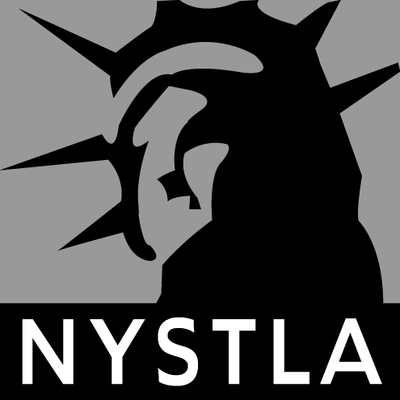Riding a bicycle in New York offers many advantages, from reducing environmental impact to providing an efficient way to navigate the city’s often congested streets. However, with the increase in bicycle use comes the need for cyclists to be well-informed about the laws and regulations that govern their rights and responsibilities on the road. New York State has specific rules in place to ensure the safety of both bicyclists and other road users. Understanding these laws is essential for anyone who chooses to ride in the state, whether for commuting, leisure, or exercise.
General Bicycle Laws in New York
Bicyclists in New York are treated similarly to motor vehicle drivers. They must adhere to the same traffic laws and are granted the same rights on the road as those driving cars or trucks. This means that bicycles must follow the rules of traffic signals, stop signs, and yield signs. Bicyclists are required to ride in the direction of traffic, never against it, and are expected to signal their turns just as motorists would.
The law also mandates that bicycles must be equipped with certain safety features. All bicycles ridden in New York must have a working brake system and a bell or other sound device that can be heard at least 100 feet away. When riding at night, cyclists must have a white headlight and a red taillight visible from a distance of at least 500 feet. Additionally, bicycles must have reflectors on both the front and back as well as on the wheels to ensure visibility in low-light conditions.
Bicyclists are prohibited from using earphones in both ears while riding, as this can impede their ability to hear surrounding traffic and potential hazards. Using a cell phone or other handheld device while riding a bicycle is also dangerous and discouraged, as it distracts the rider from focusing on the road.
Helmet Laws and Safety Equipment
Safety is paramount when cycling, and one of the most crucial aspects of rider safety is the use of helmets. In New York, it is mandatory for bicyclists under the age of 14 to wear a helmet while riding. This law extends to children riding as passengers on bicycles, whether in a seat or a trailer attached to the bike. Failure to adhere to this law can result in a fine, although the fine may be waived if proof of purchasing a helmet is presented after the violation.
Although helmet use is only mandatory for children, it is strongly recommended for all cyclists regardless of age. Helmets are proven to significantly reduce the risk of head injuries in the event of a crash or fall. Adults can set a good example for younger riders by consistently wearing helmets and prioritizing their safety on the road.
In addition to helmets, cyclists should also consider other forms of protective gear such as knee and elbow pads, gloves, and reflective clothing to enhance visibility. While these items are not required by law, they can provide an extra layer of protection and make cyclists more noticeable to drivers, especially in busy urban environments.
Bicycle Lanes and Road Sharing
New York City, in particular, has seen a substantial increase in the number of bicycle lanes in recent years. These lanes are designated areas on the road reserved specifically for bicycles. Cyclists are encouraged to use these lanes whenever they are available. Bicycle lanes offer cyclists a safer space to ride, separated from the flow of motor vehicles. However, it is essential for cyclists to remain vigilant and aware of other road users, as cars may sometimes need to cross the bicycle lane to park or make turns.
If a designated bicycle lane is not available, bicyclists are permitted to ride on the right side of the roadway, staying as far to the right as is practicable. They should always be cautious when passing parked cars to avoid being hit by an unexpectedly opened door, a situation known as “dooring.” Cyclists are advised to maintain a safe distance from parked vehicles and keep an eye out for signs of doors being opened or drivers about to exit their cars.
New York law allows bicyclists to ride two abreast, meaning two cyclists can ride side by side in a single lane. However, when the flow of traffic increases and space becomes limited, they are required to ride in a single file. This rule helps prevent traffic congestion and ensures that cyclists do not impede motor vehicles.
The team is very personable, patient and empathetic with their clients. They are upfront with you and will explain the entire process with you, they never lead you to believe otherwise, they tell you like it is and will not sell you a million dollar dream. Trust in Andrews, Bernstein & Maranto, PLLC, they work for you and he looks out for your best interest.” - Jane D.
Traffic Violations and Consequences
Cyclists who violate traffic laws in New York are subject to penalties similar to those imposed on motor vehicle drivers. Running red lights, failing to yield to pedestrians, or riding recklessly can result in fines and even the confiscation of the bicycle. Bicyclists can also be held liable for damages in the event of an accident caused by their failure to adhere to traffic laws.
Reckless riding, which includes actions such as weaving in and out of traffic or riding at excessive speeds in pedestrian-heavy areas, poses a serious risk to both cyclists and others on the road. Bicyclists should always ride defensively and be mindful of their surroundings to avoid accidents.
In the unfortunate event of a crash, cyclists are encouraged to follow the same procedures as drivers, including exchanging contact and insurance information with the involved parties and reporting the incident to the police. If the accident results in serious injury, it is essential to seek immediate medical attention and consult with an attorney to understand the legal options available.
Bicycles and Pedestrians: Rights and Responsibilities
While cyclists are considered vehicles under New York law, they must also respect the rights of pedestrians. Sidewalks are typically reserved for pedestrians, and in most cases, riding a bicycle on the sidewalk is prohibited, especially in densely populated areas. However, there are some exceptions for young children and in certain localities where riding on the sidewalk is allowed. Cyclists should always yield the right of way to pedestrians and be cautious when riding in areas where foot traffic is heavy.
When crossing intersections, cyclists are expected to follow the same rules as motor vehicles. They must stop at red lights and stop signs and yield to pedestrians in crosswalks. Cyclists should also be aware of blind spots, especially when passing large vehicles, as they may not be visible to the driver.
Pedestrians also have responsibilities when sharing the road with cyclists. They should be mindful of bicycle lanes and avoid walking or standing in them whenever possible. Pedestrians crossing streets should use designated crosswalks and be attentive to both motor vehicles and cyclists.
Should I Take The First Settlement Offer? Steps to File a Personal Injury ClaimRelated Videos
Electric Bicycles and Scooters
In recent years, the use of electric bicycles and scooters has become more widespread in New York. These devices are subject to their own set of regulations. New York law classifies electric bicycles into three categories based on their maximum speed and motor power. Class 1 electric bicycles can reach speeds of up to 20 miles per hour and are pedal-assisted, meaning the motor only provides assistance when the rider is pedaling. Class 2 electric bicycles can also reach speeds of 20 miles per hour but have a throttle that can propel the bike without pedaling. Class 3 electric bicycles, which can reach speeds of up to 25 miles per hour, are typically used for delivery services.
Electric bicycles must follow the same traffic laws as traditional bicycles, and riders are required to wear helmets when operating a Class 3 electric bicycle. Additionally, electric bicycles are generally not permitted on sidewalks or in bike lanes unless specifically authorized.
Electric scooters, another popular mode of transportation in New York, are governed by similar rules. Riders must adhere to traffic signals and laws, and the use of helmets is strongly recommended. Like electric bicycles, scooters are not allowed on sidewalks unless local laws permit it.
Verdicts & Settlements
The Importance of Staying Informed and Safe
Bicycle laws in New York are designed to promote safety and harmony between all road users. As more people turn to cycling as a means of transportation and recreation, it is crucial for both cyclists and motorists to understand the rules that apply to them. Cyclists should remain informed about changes in the law and prioritize safety by using the appropriate gear and following traffic regulations.
Accidents involving bicycles can have severe consequences, resulting in injuries or even fatalities. By adhering to the rules of the road and riding responsibly, cyclists can significantly reduce their risk of accidents. If a cyclist is involved in an accident, they should seek legal guidance to navigate the complexities of the situation and protect their rights.
If you have been injured in a bicycle accident or are unsure about your legal rights as a cyclist in New York, Andrews, Bernstein & Maranto, PLLC is here to help. Our experienced attorneys understand the unique challenges that cyclists face and are committed to advocating for your rights. Contact us today to schedule a consultation and let us help you secure the compensation you deserve.












